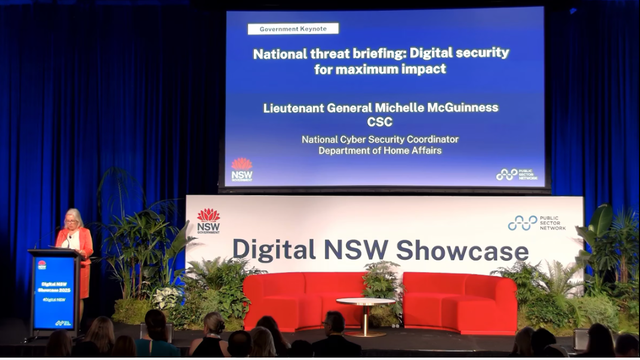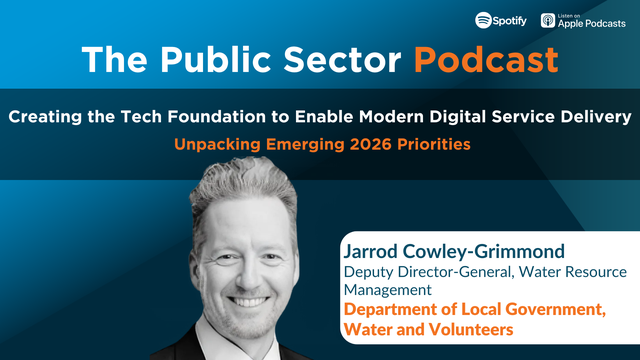

Preparing for a smart and collaborative future
The pace of technology in our modern world means that organizations at all levels and in all sectors constantly need to move forward or they will be left behind. This is particularly true in the public sector and at the municipal government level. It is often said that municipal governments are closest to the people, but in order for that to be all the more accurate, municipal governments need to embrace the technological advancements that so many of their citizens are engaged in daily. Many of them do that and do it very well. But in a broad sense it means planning for a technological and smart future, and it also means greater collaboration. For instance, Sean Baird, the Commissioner of Digital and Information Services at the Region of Peel, which incorporates the municipal areas of Brampton, Caledon and Mississauga on the western side of the Greater Toronto Area, says that we’re all in the same race here.
The Region of Peel has about a million and a half residents and runs the IT functions and customer experience activities for all the towns in the region. Social housing is a big part of what they do, so planning for the provisioning of the infrastructure is very important moving forward. The management and repurposing of assets in general is a large part of the smart city planning. The problem sometimes is that we’ve all got different starting points. There are many different business units even within the one organization, and though many have done a wonderful job, others are lagging behind. The management and planning of social housing for instance, has struggled for a long time, primarily because of funding issues and a lack of information and good data. To overcome that and many of the other concerns, collaboration both internally and with other municipalities is key. There’s an emerging consensus that the sharing of resources, at least in terms of digital infrastructure across all of greater Toronto, is how we improve what we already have. In fact, it’s really important to partner up with broader regional partners and some of our neighbours.
One of the municipal areas within the Region of Peel is the Town of Caledon. Vidit Aneja, the Senior Analyst of Corporate Asset Management in the Finance Department, says that their team is responsible for establishing a sustainable framework for asset management at the Town. The Town of Caledon in particular is one of the fastest growing areas in the Region of Peel, and thus an asset management plan was established in 2018 to support this growth and to plan for a smart future. New assets are being developed with IoT sensors, whilst existing assets are also being modernized. However, being a relatively small sized municipality, we struggle with internal collaboration, especially when it comes to future planning. So since the development of the plan, they have set up asset management working groups with staff at different levels, as well as other internal committees to get buy in from the Council and the rest of the organization. They are also working with partners in other municipalities to get their perspective into our organization, including with the Federation of Canadian Municipalities to build up the education and awareness of asset management from across the industry.
As municipalities work together and collaborate more, other issues also emerge. For instance, Joanne Hyde, the Municipal Clerk at the Township of Cramahe, also within the Greater Toronto Area, says that as we see an increase in asset management and smart infrastructure, there’s also an increase in the need for privacy impact assessments, along with programs to support risk mitigation efforts. She is particularly concerned with these matters because she is responsible for records and information management and has spent over a dozen years working in municipalities looking at data, analysis, and the changing world of staff training. Bryan Jones meanwhile is the Business Development Manager at Graybar Canada, a North American wholesale distribution business of technology services and products. I’ve been working with networks and the deployment of digital infrastructure, including IoT enrolment, for about 20 years. Municipalities are a major client of Graybar and my perspective is a little bit different because I come from the supplier side. Leveraging the technology solutions with existing and emerging infrastructure and preparing for a smart future is absolutely necessary.
Why climate change needs to be considered
These issues of smart infrastructure are particularly prescient now given the global discussions around climate change and its impact on future planning. Bryan Jones says that our cities are heating up, but that the silver lining of the last twelve months of the pandemic is that there have been reduced emissions in the environment.
“In conjunction with using with more resilient building materials, including utilizing sensors and anticipating higher water levels and changing weather patterns, it’s equally important to plan for and invest in infrastructure that will support millions of IoT sensors and technologies that help our buildings and our cities to be more efficient in order to improve the health and safety of our communities.” - Bryan Jones, Business Development Manager, Graybar Canada
Vidit Aneja says that as much as this is a conversation for now, it actually should have been at the forefront of discussions 10 or 15 years ago. Now, of more relevance is how do we build or upgrade our infrastructure so that it’s not only less costly, but can also withstand extreme weather events for generations to come. There needs to be a more relevant construction methodology and greater budgetary compliance to reconstruct things that get destroyed because of extreme floods, fires, droughts and snow storms. Climate change action plans should probably sit together with asset plans.
Sean Baird says that part of the reason why climate change poses such a risk is because of things like aging infrastructure. Many councillors and other decision makers can see the need to upgrade older assets, but some still need to be convinced that new assets should be built with climate change in mind. Often that is more expensive and they want to see that we’re demonstrating value for implementation. The truth is that ‘demonstrating value’ is, or at least should be, a multi objective undertaking. It is about both better and more resilient infrastructure, and about more efficient service delivery. As part of that, inequality, especially when it comes to the digital divide, also needs to be considered. In a region like Peel with a lot of borders and a lot of neighbours, data sharing and interoperability are also important. Previously much of what was done was decentralized and sometimes loosely cobbled together. To move forward, especially when data and technology are involved, a federated, centralized governance approach, with standards for sharing, is required.
“To demonstrate good value as we build for climate change and for the future, we need have a centralized approach and to keep the organization and Council focused on our goals, and we need to keep the public informed of our progress as we’re implementing our plans and making things happen.” - Sean Baird, Commissioner of Digital and Information Services, Region of Peel
Joanne Hyde says that climate change is one of a number risk factors that need to be considered when talking about infrastructure management. After all, asset and data management is really about the ownership, value, use, protection and disposal of assets and information, and this is relevant whether you are talking about tangible assets like buildings and roads, or intangible ones like software or data. Risk mitigation is required no matter the size of the institution or municipality, and no matter what the external factors are, be they climate change, a global pandemic or simply daily life.
The importance of data
Vidit Aneja says that data is sometimes the most prized asset that municipalities hold. Yet one of the biggest challenges is that often we don’t know what data we are collecting and why. For instance, when upgrading a road, we now use an asset management program that allows us to not just store information about the asset but do a bit of analysis as well. We’re able to drill down to a piece of the road segment and see what information is missing and who is responsible for it. We can see where to collect that information and how it relates to the risk or the level of service information. This kind of analysis and data gathering assists with an alignment between our shared assets, and also allows us to better share and collaborate with our partner municipalities. Ultimately their plan was only established in 2018 so it’s a journey and will take a little bit of time to embed all the practices.
“We need to understand what data we have and what we need to make better and smarter infrastructure decisions, which will also affect any significant climate change impacts. It will take time for us to get this right, but it will set us up to help the economy recover post-pandemic and beyond.” - Vidit Aneja, Senior Analyst, Corporate Asset Management, Finance Department, Town of Caledon
Sean Baird says that they are also preparing for life beyond the pandemic. Data and collaboration have been particularly important in their approach to laying out their fibre network. We’ve got over 830 km across the region and each local municipality built out their own assets as pieces of that broader network. Now though that it has been built, everyone wants to connect their sites but manage the traffic in their own way as best as possible. There are many stakeholders and multiple pieces of the pie. When the pandemic came along, it actually helped with solving some of these issues. In order to get our mass vaccination sites up and running, having our own fibre network in place has been helpful for us as we progressed, and helped direct the traffic. Data showed which areas needed more help and which areas were coping well. The ability to rely on our own network allowed the sites to be provisioned quickly, and with automatic redundancies in place. Now all the traffic is managed centrally whilst the individual entities manage their own set ups and maintenance.
Joanne Hyde says that knowing how data is and will be used is crucial. When looking at any asset, the first thing to know and identify is who owns and maintains the data, and how important is it? Know what you have. Security breaches are particularly prevalent, especially since the start of the pandemic, so knowing what assets exist and how they are used should be listed, categorized and defined. This should include having an inventory and even a map of assets. It should also include a disaster recovery plan for each asset, and who controls that. In terms of data, know how important that data is, and what it means for you is vital. What might seem important to one area isn’t necessarily important to another, though every organization and municipality should have data collection policy, with data breach protocols, and this should be aligned to relevant regulation and legislation.
“In a municipality in particular, the individuals responsible for the security of assets and ensuring their compliance aren’t usually the same as the people responsible for implementing security controls day-to-day, and this can have a significant impact if there is a data breach. That’s why it’s important to be aware of who owns the data and who maintains it.” - Joanne Hyde, Municipal Clerk, Township of Cramahe
One way to overcome this is by ensuring that there are robust privacy impact assessments in place, and often the generic and easily available ones are sufficient. This will assist in providing the tools, the resources for looking after your data, and it is important to maintain and look after it.
In terms of the future, Bryan Jones says that data will be crucial to the advent of sensor technology which will be used to predict or prevent flooding, proactively maintain roads with IT enabled street and traffic lights for improved safety, and many other things. It is also likely that cities and the way spaces are used will change. Overall we will have more efficient cities with revenue generating infrastructure, attracting new business, whilst also improving the quality of life for our residents.
Featured speakers
- Sean Baird, Commissioner of Digital and Information Services, Region of Peel
- Vidit Aneja, Senior Analyst, Corporate Asset Management, Finance Department, Town of Caledon
- Joanne Hyde, Municipal Clerk, Township of Cramahe
- Bryan Jones, Business Development Manager, Graybar Canada
Interested in more Smart City & Infrastructure insights? Check out our upcoming Future Cities Roadshow
































